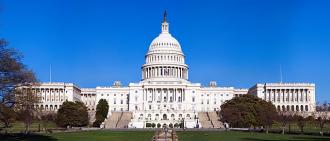Fear fed on itself in another extremely volatile U.S. trading session on Thursday. Stocks spent the majority of the day with losses of more than 1% as investors grew skeptical that global central banks could rein in rampant volatility and soothe financial markets.
Benchmark indexes moved off of session lows by the close, but remained deep in the red. The S&P 500 was down 0.9%, and the Nasdaq dropped 0.4%. The Dow Jones Industrial Average fell 1.6%, or 255 points, bouncing from a 400-point loss earlier in the session.
Bouts of volatility have become the new normal in 2016. Of the first 27 trading days of the year, only one didn't include an intraday move of at least 1%, LPL Financial analysts calculated. On the plus side, the poor start to the year may mean better performance for the remaining 10 months.
"The remainder of the year, after a bad start, has been positive 61.5% of the time," LPL Financial analysts wrote in a blog post. "The best rallies after a weak start to the year were 51.2% in 1935 and 34.8% in 2009. The only year to drop at least another 10% after a weak start was 2008, which dropped another 32.2%. In other words, a substantial drop from here for the rest of the year would be extremely rare."
Monetary policy was a focus Thursday's session with Federal Reserve Chair Janet Yellen taking the lion's share of attention in her testimony to the Senate banking committee. Yellen reiterated to Congress that the Fed was not on a "pre-set path" for interest-rate hikes and that policy would shift depending on data and financial circumstances.
Overseas, Sweden's central bank cut its main interest rate further below zero, an aggressive move that spooked European investors worried over the extent of a financial downturn. Meanwhile, the safe-haven yen saw its strongest gains since the downfall of Lehman Brothers in 2008, undercutting the Bank of Japan's late-January efforts to tamp down currency inflation by turning interest rates negative.
"Central banks are getting desperate, moving to counter one another at each turn," said Christopher Vecchio, currency analyst at DailyDX. "Volatility across asset classes seems almost guaranteed to stay for the foreseeable future."
Financial stocks were the heaviest hit in the selloff Thursday. Banks such as JPMorgan (JPM - Get Report ) , Citigroup (C - Get Report) , Goldman Sachs (GS - Get Report) and Bank of America (BAC - Get Report) were sharply lower, while the Financial Select Sector SPDR ETF (XLF) slid 2.6%.
Crude oil entered another tailspin amid concerns of weaker demand and what it spells for the global economy. Commodity traders have also shown concern over a supply glut and the inability of some of the largest oil-producing countries to address it. West Texas Intermediate crude oil fell 0.5% to $27.31 a barrel, paring an earlier decline to $26.21, the lowest since May 2003.
Safe-haven assets such as gold jumped as investors fled riskier equities markets. Gold climbed by its most in a year, up 5.2% to $1,256 an ounce, the ninth increase in 10 days.
Boeing (BA) dragged on the Dow in its biggest-ever daily decline on news the Securities and Exchange Commission had launched an investigation into the aerospace giant. Regulators are looking into accounting irregularities associated with expected sales of its composite plastic 787 and jumbo 747 models, according to Bloomberg.
In earnings news, Twitter (TWTR) slumped 4.2% on fears of slowing user growth. The social network reported that 305 million users signed into the service at least once a month, up 6% from a year earlier, marking its slowest year-over-year growth ever.
"We are clearly disappointed with the company's failure to grow its user base at a very critical point in its history," wrote TheStreet's Jim Cramer, whose Action Alerts PLUS charitable trust portfolio includes Twitter stock. "The bottom line: The market cares about user growth and Twitter hasn't proven its ability to deliver. We reiterate that the stock will remain pressured until this changes."
Cisco (CSCO) , another Action Alerts PLUS holding, jumped 10% after beating analysts' earnings estimates in the recent quarter and boosting its dividend. The networking tech company raised its dividend by 24% to 26 cents a share and authorized an additional $15 billion in share buybacks.
Tesla (TSLA) rocketed 5.5% higher after offering an upbeat quarterly forecast. The automaker expects to deliver 16,000 vehicles in the three months through March, up 60% from a year earlier. Tesla expects to deliver between 80,000 and 90,000 units for the full year.















